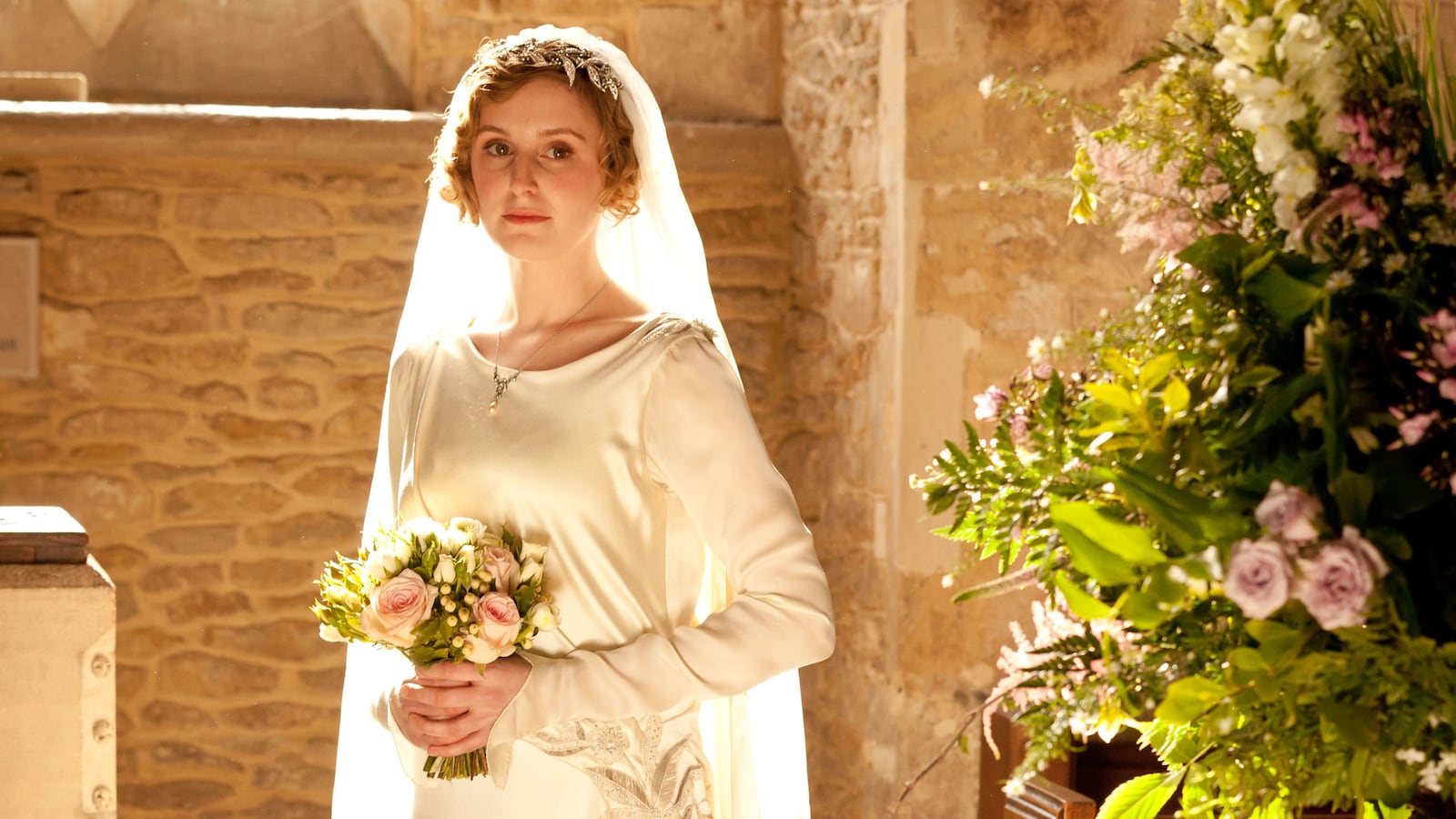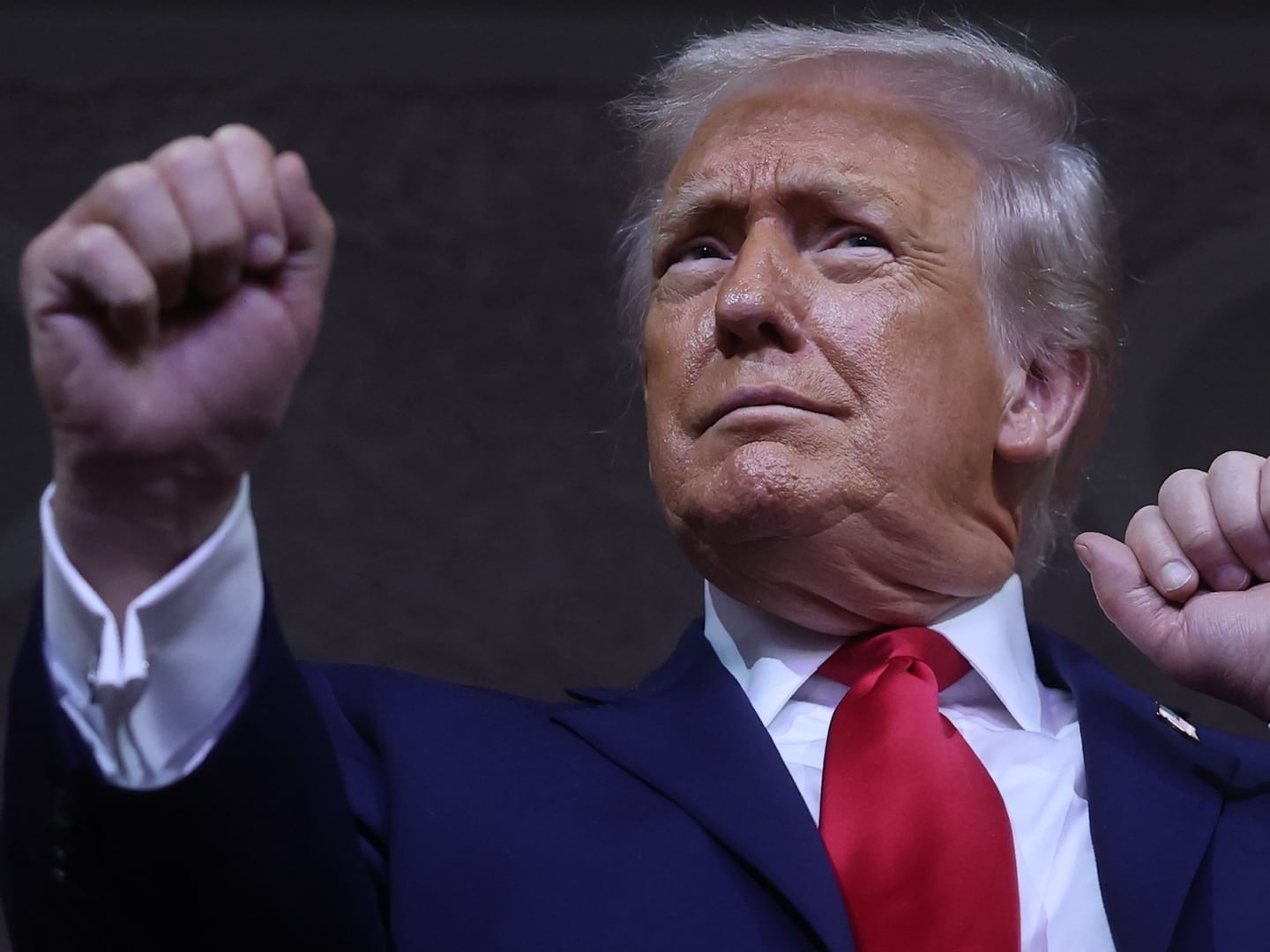
The fourth season of Downton Abbey premiered in the U.S. on Sunday, allowing us to gorge ourselves once more on the heroics and heartaches of the Crawley family—and to feast our eyes on the sumptuous clothes that drape our favorite lords and ladies. The Daily Beast talked with designer Caroline McCall about dressing the characters on the cusp of the Jazz Age.
Which character on Downton has been the most fun to dress?
Well they all are, really. All the storylines of each character have got something to do with clothing—there’s a moment where the clothing or style plays a part. So they each have their moment. Obviously, Lady Mary is in mourning [in Season 4], and we had to leave her wardrobe in half mourning, so most of the series was in purples or greys. Edith has the new life that she’s living, which leads to a new wardrobe. And Lady Rose, she’s the youngest, and maybe the most fashion-forward, or the most juvenile of the place, so she’s got her own things going on in her wardrobe. It’s always interesting dressing Violet, because she’s an older woman, but we’re trying to move her character forward slightly—she will always remain in the same silhouette because she’s an Edwardian woman, but with softer fabrics, maybe less trim, things like that. It’s interesting following the family through the years and trying to think about what they would wear each year.
Can you talk about how you use clothes to signal changes in status among the characters?
Probably Edith’s character has changed the most in that way. Like many young women, she’s not wholly confident in herself—and if you’re particularly attracted to somebody, you dress in a way that you think they would find attractive. That’s sort of how Edith has evolved. In earlier seasons, she’d worn things that were too old for her, because she was trying to attract an older man. And with being jilted at the altar, suddenly she felt, ‘All right, I’ve got to make a life for myself. I’m not going to marry into money. I’ve got to worry about myself before a relationship, and a relationship isn’t going to solve all my problems.’ And that’s reflected in her clothes in Season 3, when she becomes more of an independent woman—and it’s reflected into the world of London. In Season 4, she’s fallen in love with Michael Gregson and also has stood still for six months out of grief. So I wanted her clothing to go away from the grief in Episode 1 and show the new and exciting things that were happening in London. She wears clothes in London that she wouldn’t wear at Downton. With each character, I try to do things that reflect where they are. For example, Branson has now accepted his role as the estate manager, so we’ve tried to dress him more efficiently and workaday—but he hasn’t accepted the tweeds of the aristocracy. We tried to make his suiting more Irish, to keep him a step away from the aristocracy.
Did the Jazz Age influence the designs for this season?
Well, we’re not quite there yet—Season 4 was quite difficult to costume, because we’re not yet into the stereotype of the mid- to late 20’s that we think of as the Jazz Age, with flappers and shorter skirts and shorter dresses. We’re in 1922, trying to keep it as true as possible to that year so we don’t get ahead of ourselves. There’s very little of that period that still exists in terms of anything to hire or buy, or even any drama that was created in that year. So it was quite difficult but really interesting to research, and exciting to try to do.
Are there any fashion designers that you relied on when designing Season 4?
Not relied on but certainly looked to—Madeleine Vionnet; Lady Mary wore a dress in Season 3 that was inspired by a Vionnet, and she wears various dresses in Season 4 that are inspired by her. She was really ahead of her time in terms of cutting. Also Lanvin was doing beautiful work. There are so many designers at the time—Beer, Poiret was still an influence.
Did you look through old magazines or books? How did you find what people wore in that year?
I’ve got so many books, but I’ve also got lots of original magazines. I’ve got Vogue but other things as well that weren’t as high class. Those are interesting to look at because they’re the real deal. Lots of photographs, photographic websites, or libraries in London. I look at people at the time from a similar background, to link in to the characters and find out what suits the characters. And that’s really interesting as well, because it’s a time where there was lots of photography, so there are lots of photographs to look at. Obviously not in color, but you draw your color inspiration from original documents.

Do the actors get any input in choosing the clothes for their character?
It’s a collaborative process. We try on existing garments—some of those will work as they are, and others will just be for shape or color. I’ll show each actor where I think their character would be in this period of time. Obviously, I have my ideas and explain the look I’m going for, but they’ve got to be comfortable, they’ve got to feel it’s right for their character. So we really work together.
What’s your background—is it in film or television or theater?
I’ve worked on TV and film as an assistant designer, but the third season of Downton was my first big design job. It was really a big opportunity for me—and very, very daunting when your first major design job is to design Mary’s wedding. And not only do you design Mary’s wedding in Episode 1, but you have to carry on and do the rest of the series. So it was a very steep learning curve—but obviously it helped a lot having assisted Susannah Buxton, the original designer, on Season 1. I’ve assisted her on many other jobs as well, but I had been there from the conception of all the characters and I knew all the actors well, so it was helpful with the induction.
Let’s talk about the wedding dresses. How did you design the gowns for Mary and Edith in Season 3?
I knew that I’d have two weddings to design, so I looked at lots of wedding references at the time. The tricky things really seemed to be lace and fastened, draped dresses—and I knew that Michelle [Dockery] would suit lace and Laura [Carmichael] would suit fastening. And Lady Mary’s wedding was a real society wedding. She was the eldest daughter, and she was marrying the heir, so it had to have that regal quality to it. In the script, it describes as she’s coming down the stairs, and you knew where the stairs were, and the light coming, and she stands on the top of the stairs. I wanted the whole dress to glisten, so I used a lace with silver thread in it. And the tabard look was very fashionable lace tabard to go in to a train. And we trimmed the edge with Swarovski crystals and pearls. And for Lady Edith’s, a friend of mine had an original train, which I borrowed. And I wanted Edith to look more beautiful than she had ever looked before. I wanted it to be a surprise at how stunning she looked. Because I didn’t want her jilted at the altar and we felt sorry for her. And we talked to the actors about how they wanted to play it. I wanted it to be more of a heartbreak moment, where Strallan, because he loves her, thinks, ‘I can’t take life away from this beautiful young girl. She needs to go and live.’ As much as it was heartbreaking for him to do. We really wanted her to look absolutely stunning. So we used this original train and created the dress around it, and we appliquéd matching flowers and crystals into the dress to match the train. And they both wore the wedding tiara, which echoed beautifully with both dresses.
Is there one costume across all the seasons that you think is the most memorable for you?
I think there are a lot of iconic moments. I think in Season 1, it would be Sybil’s harem pants. Season 2 would be Mary’s engagement dress. Season 3 would be both wedding dresses, but also there’s Shirley Maclaine’s arrival. And series 4, well, from what you’ve seen, in the first episode, probably Edith at the Criterion when she arrives—and then hopefully costumes from the last episode.






